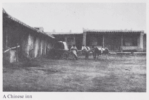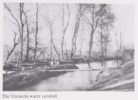Seven Journeys Eastward 1898-1912: Among the Cheremis, Kalmyks, Mongols and in Turkestan and to Afghanistan
Gustav John Ramstedt
Seven Journeys Eastward 1898-1912: Among the Cheremis, Kalmyks, Mongols and in Turkestan and to Afghanistan, written by the Finnish linguist Gustav John Ramstedt was first published in Finnish in 1944 and 1946. A Swedish translation of the volume by Mary Numelin, was published in 1961. The current edition was translated to English from Swedish, and edited by John R. Krueger and published in 1978.
This volume gives a good insight into the realities of a field-working linguist in Central Asia during the turn of the last century, a time filled with tension between Finland and Russia, which was further complicated by the existence of the two then newly-born republics of China and Mongolia.
Summary
As a linguist and specialist in the Finno-Ugric languages, Ramstedt traveled on several occasions from Finland through Russia to Central Asia with the aim of studying the languages, traditions and history of the Mongol and Turkic peoples and for the purpose of collecting dictionary material. Throughout his travels Ramstedt took notes of words and sentences, and he collected songs, epics, proverbs, and riddles from the different languages. In order to become familiar with the language and the way of life of local people he often stayed at one and the same place for several months. Besides studying different Mongolian dialects, Ramstedt was also interested in investigating ancient traces of Turks in Mongolia, the history of the Turkic people, especially the Uighurs. Furthermore, he was interested in finding traces of “the Mongolian armies which in the 1200’s had conquered Persia and present-day Afghanistan and Baluchistan, and which according to Mongolian data had never returned to their home region in Central Asia” (p.127). Ramstedt was mostly treated with great respect by the Mongolian tribes that he encountered. At one place Ramstedt himself gives the following explanation of this: “In the paper which the authorities in Urga had given me as a passport, it said that I was travelling around the country to collect knowledge, erdem erikti. These words literally mean ‘to collect or gather virtue.’ The greatest desire pious Mongols have in the world is to collect virtue and to do good deeds.” (p.85)
Detailed account
For his first research journey in 1898, Ramstedt travels to the Cheremis living along the Volga River, along with his wife and their two-month old daughter. First they settle in the village of Tusnal in the Cheremis region where they hire a man to work as an informant, servant and a babysitter. After some time they move to the city of Kazan and then to Urga, where Ramstedt finds an old lama who teaches him literary Mongolian. Later, in order to collect more historical linguistic data, Ramstedt and his companions travel to the residence of the Mongolian Prince Khandu Wang and the monastery Wang’s khüree.
After having defended his thesis in 1902 in Finland, Ramstedt gains a travel grant for visits to different Mongolian habitations, Kalmyks on the Volga and Turkestan and Afghanistan. He stays one month at the Kalmyk village Chervlennaya.
Since Ramstedt repeatedly travels through Russia, Russian foreign relations and politics concerning the Mongol and Turkic people in and near Russian territory are of constant interest. Ramstedt gives several accounts of Russian politics and foreign relations.
In 1904 Ramstedt travels to areas north of the Kuma River, inhabited by the Nogai Tatars. The following year he leaves for Stravopol in order to study the Kalmyk living there. He then goes to the city of Temir-Khan-Shura to study the language of the Kumyks.
During another trip in 1903 Ramstedt heads for the border between Russian Turkestan and Afghanistan in search for Mongols or “Moghols” in Afghanistan. Although the commandants and governors working at the border tell him that there are no Mongols in Afghanistan, Ramstedt manages to find two workers at the clay pits near the border who speak ancient Mongolian. Ramstedt pays the two men double their salary at the clay pits for their services as informants and he transcribes their language although Ramstedt himself doesn’t speak the ancient dialect of the two workers.
In 1905 Ramstedt travels to Eastern Turkestan for further studies on the Kalmyks and their language. In Chuguchak in northwestern China, on his way to the capital of the Sinkiang province, Urumchi, he hires a Kalmyk man who speaks Kalmyk, Taranchi, Chinese and Russian, as a servant and a translator. In Jirgalangtu he visits Prince Balta of the Torgouts who was later appointed governor of the Altai district by the government of China.
In December 1905, rumors start spreading that Finland is declaring war against the Russian Empire. Several demonstrations and riots break out. Because of a railway strike the road to Finland is blocked and Ramstedt is stuck in Omsk.
Ramstedt travels to Mongolia on two other occasions in 1909 and 1912 in order to look for historical traces of Turks in Mongolia by investigating ancient Turkic inscriptions on gravestones.
52 photographs taken by the author during his travels can be found on p. 234 –266.
Bibliographical notes about the author can be found on pp. 267–168.
An index can be found on pp. 269–277
Azize Güneş


















































